Newton's Second Law
Newton's Second Law of Motion states that the force acting on an object is equal to the mass of that object times its acceleration. In equation form, it can be expressed as:
F = ma
Where:
- F is the force applied to the object
- m is the mass of the object
- a is the acceleration of the object
This law essentially explains how the velocity of an object changes when it is subjected to an external force. The greater the force applied to an object, the greater its acceleration will be, assuming its mass remains constant.
Study Guide for Newton's Second Law
To better understand and apply Newton's Second Law, consider the following study guide:
- Understanding Force: Familiarize yourself with the concept of force and how it can be measured. Force is a vector quantity, which means it has both magnitude and direction.
- Mass and Its Measurement: Learn about the concept of mass and how it is measured. Mass is a measure of the amount of matter in an object, and it is typically measured in kilograms (kg).
- Acceleration: Understand the concept of acceleration, which is the rate at which an object's velocity changes over time. It is measured in meters per second squared (m/s2).
- Formulating and Solving Equations: Practice formulating and solving equations using the formula F = ma. This will help you calculate the force, mass, or acceleration of an object when the other two variables are known.
- Real-world Applications: Explore real-world examples and applications of Newton's Second Law, such as understanding the forces acting on a moving car or the acceleration of objects in free fall.
By mastering these concepts and applying them to various scenarios, you can gain a deeper understanding of Newton's Second Law and its significance in the study of motion and forces.
[Newton's Second Law] Related Worksheets and Study Guides:
.◂Science Worksheets and Study Guides Second Grade. Mammals and birds
Study Guide Mammals and birds
Mammals and birds  Activity Lesson
Activity Lesson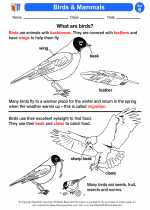 Birds & Mammals
Birds & Mammals  Worksheet/Answer key
Worksheet/Answer key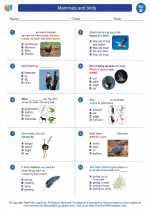 Mammals and birds
Mammals and birds  Worksheet/Answer key
Worksheet/Answer key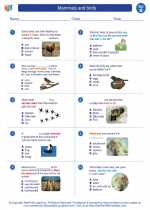 Mammals and birds
Mammals and birds  Worksheet/Answer key
Worksheet/Answer key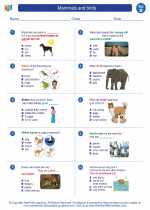 Mammals and birds
Mammals and birds  Worksheet/Answer key
Worksheet/Answer key Mammals and birds
Mammals and birds  Vocabulary/Answer key
Vocabulary/Answer key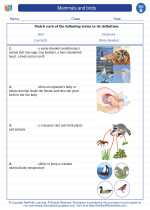 Mammals and birds
Mammals and birds 

 Activity Lesson
Activity Lesson
 Worksheet/Answer key
Worksheet/Answer key
 Worksheet/Answer key
Worksheet/Answer key
 Worksheet/Answer key
Worksheet/Answer key
 Worksheet/Answer key
Worksheet/Answer key
 Vocabulary/Answer key
Vocabulary/Answer key

The resources above cover the following skills:
LIFE SCIENCE (NGSS)
Biological Evolution: Unity and Diversity
Students who demonstrate understanding can:
Make observations of plants and animals to compare the diversity of life in different habitats[Clarification Statement: Emphasis is on the diversity of living things in each of a variety of different habitats.] [Assessment Boundary: Assessment does not include specific animal and plant names in specific habitats.]